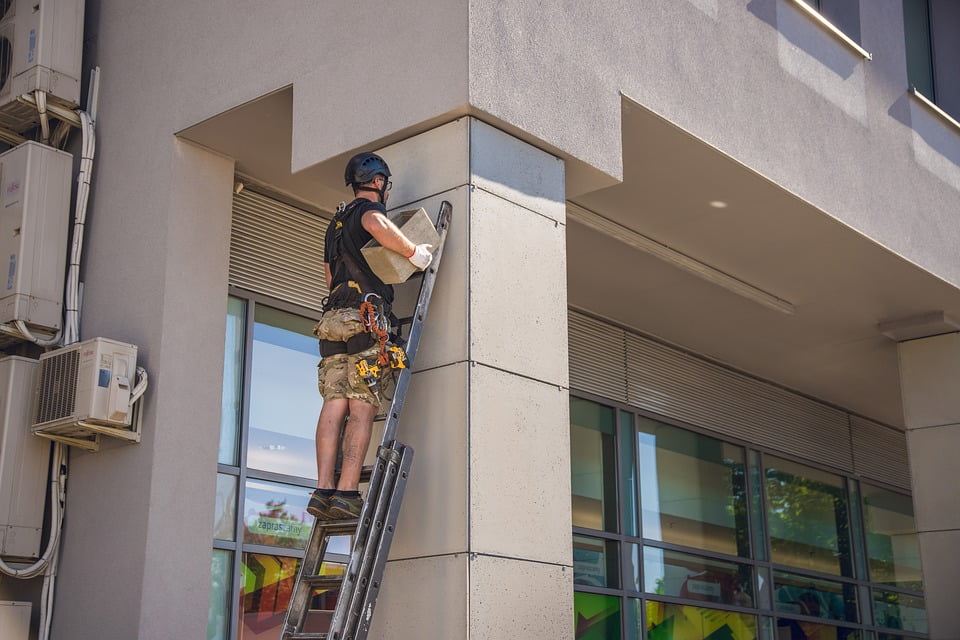Working at height is inherently dangerous and is a major cause of injury and fatality among workers. Given the risks involved, even the smallest errors when working at height can be disastrous. Whether it’s accidents or injuries caused by falling from ladders or through surfaces that can’t support the weight of workers and their equipment, it’s all too easy to sustain an injury. Here are the working at height mistakes to avoid.
Not assessing the risks of the job fully
Many people roll their eyes when risk assessment is mentioned. But properly assessing risk is essential before you carry out any task, especially an inherently dangerous one. The temptation is always there to cut corners when you just need a job done quickly or you’re short-staffed, but the potential consequences are really not worth it.
When a job needs to be done at height, measures need to be taken to reduce the risk. Such as choosing the best equipment and making sure employees are adequately trained for the job. Checks of the working area should always be carried out which should identify if roofs or other surfaces are able to hold the weight of the worker and their equipment, and if there are any obstacles to carrying out the job safely, such as power cables or obstructions.
Failing to check that personal protective equipment (PPE) is in good working order
Anyone who works at height should check their PPE before they do anything else. Imagine being up a tall ladder or up some scaffolding and finding out your gear is about to break or needs repairing? It’s better to know these things and to make any adjustments before your feet are off the ground.
Not wearing the correct PPE for the job and the height you’re working at
PPE requirements vary for different types of job, and generally, the more dangerous the job, the more protection you need. But while PPE can be transferred between different jobs, some jobs have specific requirements. Make sure that you have PPE that’s designed for the job you’re doing and for the height you’re working at. Having the right protective equipment might mean the difference between life and death when you’re working at precarious heights.
Not keeping safety equipment well-maintained
No matter what industry you work in, safety equipment needs to be well-maintained. Your company (or you if you’re self-employed) should keep clear records of any testing or maintenance that is carried out. Any faults or repairs should be dealt with as soon as possible and faulty or damaged equipment should not be used.
Letting untrained workers work at height
Workers must be trained on how to work at height safely. It doesn’t take much of a fall to cause injury, and some basic training on things like ladder safety procedures can protect you and your employees.
Failing to follow ladder safety procedures
Following on from the last point, ladder safety training should include information on how to safely use different types of ladders and what type of jobs they should be used for.
Resting ladders on unsafe surfaces
Ladders should always be set against surfaces that are strong enough to bear their weight. Don’t forget, you and any equipment you need will be going up and down the ladder too. Avoid resting ladders against windows or plastic guttering as they generally can’t take much weight and your ladder can slip.
Using ladders for jobs that require more suitable equipment
Ladders aren’t meant to be used for prolonged periods of time and they aren’t meant to bear excessively heavy loads. Generally, if you are doing any task that’s going to require you to be up a ladder for more than 30 minutes, or you need to use heavy equipment, something like a scaffolding tower is probably more suited to the job.
Where to get your working at height equipment
As specialists in Safety Steps, we have one of the largest and most comprehensive collections in the UK today. We pride ourselves on our Safety Steps being well-made and well-priced. All our warehouse steps, library steps, domed feet steps, mobile safety steps, heavy-duty steps, and service platforms are manufactured to strict workplace safety standards. Many of the products in our range are also made right here in the UK.
We never compromise on quality and always come with a manufacturer’s warranty and are perfect for working at height. We supply safety steps and ladders for offices, schools, universities, retail outlets, warehouses, factories, hospitals, laboratories, and industrial working environments, and stock the latest models and designs from industry-leading brands. Many of our safety steps and platforms are GS-approved and are designed to perform well in demanding areas.
Safety Steps are an everyday essential for warehouse operatives, order pickers, janitors, and technicians. Because they allow for fast performance of daily tasks while reducing the risk of workplace injuries. You’ll find both static safety steps and mobile safety steps in our vast online collection. Along with our best-selling domed feet safety steps that glide on castor wheels and secure to the floor when weight is applied.
Our Safety Steps are customisable and have a range of tread options. They’ll transform the way you retrieve and stack goods in the workplace. Browse our range now to save time and money by providing your workforce with the steps they need to stay safe and productive.
If you liked this article and interested in more helpful articles and interesting tips. Check out the rest of our blog.




